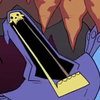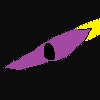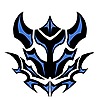HOME | DD
 105697 — Man's Arrogance: Denizens of Beiru (Part 5)
105697 — Man's Arrogance: Denizens of Beiru (Part 5)

#adversary #apex #daikaiju #giantmonsters #godzilla #kaiju #mothra #titans #mansarrogance
Published: 2020-07-04 06:51:18 +0000 UTC; Views: 17786; Favourites: 138; Downloads: 18
Redirect to original
Description
The discovery of Beiru was just what Apex and Adversary needed to justify their cause and fund their respective foundations. News of an ancient underworld ecosystem made up of fantastical marvels of nature, and a civilization living within its confines speaking of even more yet to be found, made the higher-ups reconsider the purpose of this once crackpot and ineffective branch of their secret government. Pretty soon, Apex and Adversary found themselves with millions of dollars of funding. Thanks to this incredible surge of interest and money, both organizations began the construction of a kaiju detection system. While this detection system could not track the movement of kaiju/daikaiju effectively, it could more accurately pinpoint any specific anomalies popping up that might have been caused by one of these incredible organisms. Working with the Ailenas and their worshipped daikaiju, along with advice from Xamphar and Ginko, Apex and Adversary had finished the construction of their kaiju detection system. With all systems functioning and operational, the device began detecting several anomalies that would later be ascribed to be from Godzilla and Anguirus as they traverse the Pacific Ocean. But it wouldn't be long before this system picked up a new anomaly, one originating somewhere in the North Atlantic...---
Denizens of Beiru (Part 5/5): SAVANNAH
Minya (Gojirasauros irritator; "The Irritating Gorilla Whale/Abyssal Dragon"): When fossils of this creature were first discovered in the late 50s, they were at first thought to be juvenile members of the G. siva sauroform superspecies, but this notion would later be disproven after living specimens were found within the confines of the Beiru pocket. Around 20 meters tall when standing, this sauroform is much smaller than its distant relative G. siva, and it also shares many characteristics distinct from this apex predator, mainly relatively reduced gills, atrophied dorsal holes (now reduced to almost microscopic pores across the dorsum), and only a single row of very tiny dorsal plates. Despite its much smaller size, the Minya is a terrifying predator with a diet that usually consists of much smaller animals. This preference to smaller animals may have been the reason that, in the early years of settlement in Beiru, Minyas hunted down humans whenever they met, and they seemed to target children specifically (perhaps for the same reason any predator does). It was for this reason, along with the supposedly "very ugly" appearance of the Minya and the horrifying sounds it makes, that many began to hunt down and kill any Minya they find. Of course, such hatred has mellowed over the millennia, with Minya being warier of human settlements now. Alongside its radioactive and carnivorous diet, the Minya will supplement its diet with the Letchi Berry, either during times of famine, or whenever the mating season comes around. Despite its overall modest appearance, the Minya has been of great help when understanding the workings of its larger cousin G. siva as well as sauroforms as a whole (since it is quite common across the savannahs), specifically the reproductive methods of this group. During the mating season, the plates on both sexes grow to a much larger size as a way of impressing their partners, and they gain a temporary ability to emit more concentrated energy attacks. In addition to their massive plates, they will emit their terrifying sounds and plumes of smoke to further the bonding and impressment with their suited partner. Once courtship ends, both Minyas will tear off a plate from their partner's back before fusing the plates together with a beam of atomic energy, before finding a sufficiently radioactive area, burying the fused plates, and guarding them. Once a couple of months pass, a hatchling Minya emerges from the plate casing. Since the two are decently close relatives, it is assumed that G. siva may also employ a similar reproductive strategy, and that the reproductive strategies of other sauroforms may be just as bizarre...
Megapede (Arthrocicada beiruensis; "Jointed Cicada of Beiru"): An extremely odd arthropod, the Megapede is a highly chimeric kaiju, with several traits shared with arachnids, centipedes, and insects. As of now, it is hard to say what its exact ancestry is or where it fits on the arthropod family tree. What is certain is its voracious appetite for all fungal life in Beiru, being highly generalistic. This has caused the Ailenas some problems, as the Megapede is not only a voracious eater but also a large kaiju, with specimens reaching almost 200 meters in length, making them very hard to drive off whenever their gods are off surveying their territory. To further add to the problem this kaiju species poses to Ailenas agriculture is its extensive armor plating and a coating of very small hair that can be shaken off to irritate enemies into retreating. Additionally, it can also produce a frothing, toxic substance that it secretes from pores in the eyespot area of its armor plating. To top it all off, the Megapede can also produce high-pitched shrill recorded to reach over 150 decibels in some cases, only furthering its ability to dissuade any oncoming predators. Fortunately, Megapedes can be dissuaded if one spreads Mothra scales/Shisa fur around their crops beforehand, though this effect will eventually subside until more is attained. While the Megapede usually spends most of its day roaming the savannah, it will take a break from eating to rest in any of its burrows to rest during the night cycle of the Beiru pocket or move to the surface to shed its exoskeleton alongside the other massive armored invertebrates that undergo a similar process. The Megapede often lays hundreds of eggs in some of its burrows, which hatch into voracious nymphs that eat anything they find. Fortunately, most are eaten during these early stages, preventing Megapedes from reaching plague-like proportions (most of the time).
Mogu (Pyrodraco bipes; "Two-Legged Fire Dragon"): An aerial hunter that reigns above the savannahs of Beiru, the Mogu is a terrifying predator and a bane for all those who come across it. Based on its morphology, it descended from some kind of ancient ray-finned fish, with the first two rays evolving into grasping organs that later fused together, with the rest of the fin evolving into a flying organ. With wingspans averaging around 200, with some reaching almost 300 meters, it is the third-largest flyer within Beiru's confines behind the Gigamoths and Thunder Serpents. Their size means they are able to access a wide range of prey items, including some of Beiru's larger fauna. They use their hooked claws, serrated teeth, and whip-like tail to dispatch typical prey, but when aiming to hunt something larger, a temporary aggregation may form and use their ability to emit fire to cause a massive inferno that traps their quarry in a wall of flames, either suffocating it or burning it to death. Said fire can soon spark into wildfires that control the growth of more aggressive sessile life from the jungles from overtaking the savannah, though occasionally these fires can burn to such an extent that apex predators must step in and put an end to it. One Mogu's pyromaniac tendencies were so uncontrollable, said the Ailenas, that the individual threatened to burn all of Beiru to the ground (and perhaps whatever was on the surface if the rampage ended in success). Fortunately, the crisis was averted with the help of the Ailenas gods, though to this day, the damage from this Mogu's arson are still visible in massive pathces of torched rock, savannah dotting areas that once used to be in the middle of a jungle, among other things. Even without such exceptional individuals, Mogus cause a lot of ruckus on their own, and many times are needed to be stopped by the more dominant daikaiju in order to curb said tendencies. Such destructive acts may have been, in part, due to the Toxic God, who's lethal toxic clouds are said to have killed all the elderly, experienced Mogu, leaving behind only the traumatized, rambunctious, and inexperienced younger Mogus which were far less knowledgable in curbing their pyromaniac tendencies. This has since died down as the Ailenas state, but they still watch out for any Mogu that might be too incendiary for its own good.
Qilin (Dracohippus lupus; "Dragon Horse Wolf"): Just as the Ailenas possess aerial mounts that allow them a significant advantage against most enemies, they also have a ground-based part of their standing army, with their mounts being a creature thought only to be confined to mere myth: The Qilin. Cursorial descendants of an ancient therapsid, these armored beasts superficially resemble the hoofed mammals that traverse the plains of the surface ecosystems, but there are many differences in ecology. While Qilin do eat many kinds of fungi and plant matter, a good portion of their diet is actually made up of other kaiju. Reaching almost 5 meters tall at the head, they are large enough to take down a good amount of the Beiru's endemic wild-life on their own, but they are incredibly social animals and rove the savannah in packs normally reaching over a couple of dozen individuals made up of a dominant breeding pair and their relatives. They work in highly coordinated packs that come up with different hunting strategies for different kinds of prey. Not only do they come equipped with powerful jaws, but they have the ability to emit white-hot flames that some consider being among the hottest of any kaiju/daikaiju. Their incredible arsenal of weaponry, already impressive size, and social nature make Qilin some of the most successful hunters on Earth, with nine out of ten hunts ending in a kill. Their tenacity and cunning more than make up for their relatively diminutive size. In fact, their position on the predatory hierarchy of Beiru may only be outclassed by the Gigamoths, Thunder Serpents, and Shisas, and the Jairocks, as there are many accounts and retellings in Ailenas history (as well as several modern accounts) that tell packs of Qilin standing up to adult Sasoris, Allers, Geruderahs, Barugarons, and even Mogus, with some cases of packs being successful in bringing down juvenile and sub-adults of these much larger predators. In the case of the Sasoris, they concentrate their flame breath on the vulnerable joints, until the Sasori crumbles under its own weight. The same goes for Allers, Geruderahs, and Barugarons, as they try to severe the tendons in the hindlimbs of these giants. With Mogus, they seem to take advantage of these flying kaiju's propensity to cause fires, waiting for them to dive for prey fleeing from a raging inferno before dog-piling the creature, aiming to immolate the wings so that dispatching the creature becomes easier. Qilin themselves are hardy, covered in very durable overlapping armor plating, making them much tougher than they look and allowing them to even take on such monstrous creatures. Their intelligent and social nature has allowed some of them to be tamed and used by the Ailenas, sometimes as work animals but most of the time as war mounts. Being coordinated and intelligent, they can not only understand human gestures but also inform their own pack members of a plan of attack the Ailenas are striving towards. The Qilin and the Qilin-Rider have been instrumental in warding off previous invasions of Beiru, crushing enemies with the might of this deadly kaiju. So vicious and boundless is their ferocity against larger opponents that they have been nicknamed "Anguirus-Hounds", after the stubborn and loyal daikaiju ally of Godzilla. Like the Garugaru, the Qilin under the Ailenas' standing army are not truly domesticated and can return to the wild whenever they needed/wanted to. Even if they remain wild, formerly tamed Qilin can still recognize their rider and remain loyal to them until death, with some accounts of them coming back save their rider if they were ever in mortal danger.
Ceratarus (Goliatherium sp.; "Goliath Beast"): The largest creature in all of Beiru, the Ceratarus is a goliath of a descendant of the early dinoceratans, one of the first groups of large mammalian herbivores to roam the Earth after the extinction of the dinosaurs. While similarities still exist to its Eocene cousins, the Ceratarus has built on its predecessor's adaptations for large size and taken it to the extreme. There are two species of this titanic mammal living in Beiru: The Royal Ceratarus (Goliatherium regius) which reaches around 50,000 tonnes in mass, and the Goliath Ceratarus (Goliatherium goliatus(pictured here)), which masses around 90,000 tonnes, making it one of the largest terrestrial mammals known. Adults of each species have almost no natural predators with the exception of the local pack of Shisas and the occasional Thunder Serpent. Destructive foragers, they tear their way through forests of fungi, clearing space for the savannah and creatures that rely on it. They come equipped with massive canines and bony-ossicones infused with metallic elements, which are usually used to settle fights between other Ceratarus, but also function well as effective predator-deterrent weapons (only Shisas and Thunder Serpents have been witnessed surviving physical blows from adult Golitah Ceratarus, mainly due to specialized scales and sheer size respectively). While already too massive for most predators to hunt, Ceratarus move in herds made up of anywhere from a couple to several dozen individuals, which can have far-reaching effects on the environment itself. While adults are rarely hunted, juveniles are at a greater risk of being predated upon, so such herds ensure the survival of the next generation of Ceratarus.
Barugaron (Draculadraco harikeni; "Hariken's Dracula Dragon"): A creature seemingly out of oriental myth, the Barugaron is only outmatched by the Shisas and Qilins for apex predator of the Beirunese savannahs. Reaching lengths exceeding 150 meters in length, they are titanic beasts that hunt a wide range of prey across the Beiru savannah, their preferred prey being Minyas, Megapedes, and juvenile Ceratarus. It dispatches prey with three-fingered hands, which have immense grappling power thanks to the opposable thumb on one of the hands. After the prey is subdued, the Barugaron will first devour the preferred cuts of the meal before vomiting a saturated oily substance on it. This oil is a byproduct of symbiotic bacteria that live inside the Barugaron's body that acts as a preservative. The oil will not only keep the remaining flesh of the animal fresh (which reduces the Barugon's hunting attempts as it only eats prey that has been freshly killed by either it or another predator, but it also masks the scent of the carcass from rival carnivores and produces several chemicals that make the carcass unsavory for any scavenger except the Barugaron. This oily substance can also be used as the fuel for an offensive fire attack to ward off other Barugaron from a kill, or when trying to dissuade a pack of hunting Qilin or Shisa. The Barugaron, oddly, does not seem to drink water, perhaps due to obtaining all the water it needs from the prey it catches, obtaining it from the very blood of its victim.
Lava Bees (Vulcanapis beiruensis; "Volcano Bee of Beiru"): Not every inhabitant of the Savannah is massive. The most common resident are the minuscule Lava Bees, who workers usually only reach the size of a large hornet (though the queen may be a meter long). Despite their name, they are more commonly found within the savannahs of Beiru as opposed to the volcanic fields (where they were first discovered), though they do seem to have at least descended from some kind of honeybees thousands of years ago. Despite such a short time in Beiru compared to many of the other inhabitants, the Lava Bees have diverged a great deal from their ancestors, not only growing in size but also temperament. They are highly aggressive in combat with their stings inflicting agonizing pain and sometimes even death if one is not too careful. However, they give plenty of warning before they do attack, with workers making a drumming sound by beating their wings, said to be reminiscent of soldiers marching to war. Along with their stinger, they possess armored bodies like that of distantly related velvet ants that protect soldiers from being easily killed by larger invaders. These kaiju hymenopterans make extensive hives in burrows and empty fungi trunks, with a colony growing to a size that might accommodate tens of thousands of individuals. These hives are only possible thanks to the great amount of sessile life the Lava Bees pollinate. As such, they also provide plenty of services to their own ecosystem, spreading fungal and plant spores across Beiru, which has apparently helped in the comeback of the Beiru ecosystem from the Toxic God's rampage.
---
NEXT: Conflict in Nara
---
All creatures here are owned by Toho and Tristar (except Qilin)
Related content
Comments: 21

👍: 0 ⏩: 1

👍: 0 ⏩: 0

👍: 0 ⏩: 1

👍: 0 ⏩: 1

👍: 0 ⏩: 0

👍: 0 ⏩: 1

👍: 0 ⏩: 1

👍: 0 ⏩: 0

👍: 0 ⏩: 0

👍: 0 ⏩: 1

👍: 0 ⏩: 0

👍: 0 ⏩: 1

👍: 1 ⏩: 0

👍: 0 ⏩: 0

👍: 0 ⏩: 1

👍: 0 ⏩: 2

👍: 0 ⏩: 0

👍: 0 ⏩: 0

My guy made minya more terrifying and love the inclusion of barugaron here
👍: 0 ⏩: 0

👍: 0 ⏩: 0

















